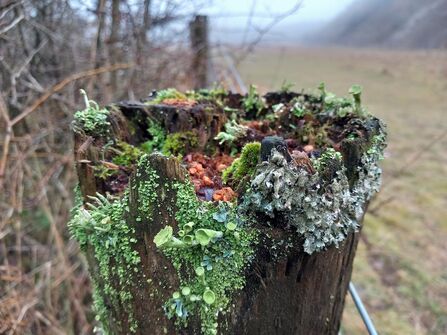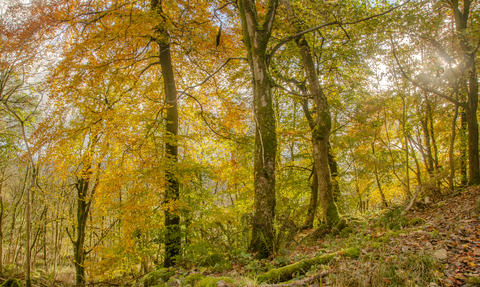When you’re out exploring Yorkshire’s wild places—whether wandering through ancient woodlands, clambering over rocky outcrops, or pausing beside a windswept moor—take a moment to look closely. You might just spot one of nature’s most fascinating partnerships quietly thriving on a tree trunk, stone wall, or even a fence post: lichen.
What is a lichen, really?
Lichens are not just one organism, but a symbiotic relationship between fungi and algae (or sometimes cyanobacteria). The fungus provides structure and protection, while the algae photosynthesise, producing food. Together, they form something entirely new—a living collaboration that’s greater than the sum of its parts.
This partnership is so unique that it helped shape the very concept of symbiosis in science. As Merlin Sheldrake writes in Entangled Life, lichens challenge the idea of life as competition, showing instead how cooperation can be a powerful force in nature.
Where do lichens live?
Lichens are incredibly adaptable. They encrust rocks, trees, roofs, fences, cliffs, and even deserts. Some are bright lime green or electric yellow, while others blend in like camouflage. You’ll find them in lowland heath, acid grasslands, and ancient woodlands—each habitat offering its own microclimate and surface for lichens to colonise.
In Yorkshire, one of the most striking species is tree lungwort (Lobaria pulmonaria). This leafy lichen thrives in humid, clean-air woodlands, often clinging to the bark of mature broad-leaved trees. It’s a sign of a healthy ecosystem and was nearly lost during the Industrial Revolution due to air pollution. Today, it survives in pockets of ancient woodland in the west of the UK, including parts of Yorkshire.



